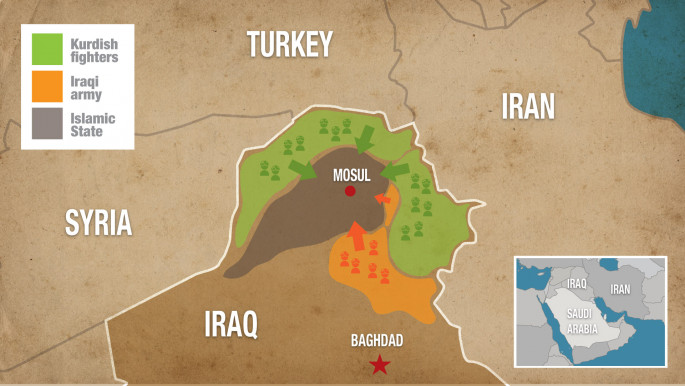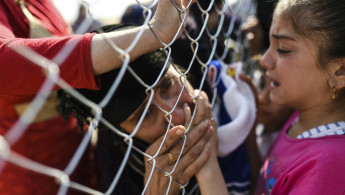Mosul displacement could become a 'humanitarian disaster'
In comments to Rudaw on Thursday, Hoshang Muhammad, Director of the Kurdistan region’s Joint Crisis Coordination Centre, relayed that 5,490 refugees had arrived in Kurdistan since the Mosul offensive began on October 16.
Observers expect that the influx of refugees will increase as Peshmerga forces, working in tandem with the Iraqi army, move into more densely populated areas that civilians have been unable to flee from.
"If all the prepared camps are constructed on time, we will then have the capacity to host around 33,000 new refugees," said Mohammad.
Currently, five new camps to accommodate those displaced are close to completion on the outskirts of Dohuk.
IS advances in Iraq and an influx of refugees from Syria have seen Dohuk accommodate 600,000 refugees since 2013, a huge number for a city with a population of some 800,000.
Around 1.8 million refugees and internally displaced people currently reside in Kurdistan Iraq after relocating to the area following Islamic State's 2014 advances in the country.
UN upping its response
Like Mohammad, Bruno Geddo, UNHCR’s representative in Iraq, noted on Thursday that displacement from Mosul to date had been modest with the UN refugee agency recording some 10,550 displaced persons since military operations began on October 16.
 |
UNCHR has announced that some 7,200 tents will be flown to Iraq this week from an emergency storage facility in Dubai as part of the agency’s aim of securing 50,000 tents and 50,000 emergency shelter kits for displaced people and local hosting communities.
Accompanying these developments the UN World Health Organization (WHO) has also accelerated its response measures in preparation to accommodate displaced people.
In a statement put out on Wednesday, WHO said that it had prepositioned 46 mobile medical clinics, 45 mobile health teams, and 26 ambulances at strategic locations in Nineveh province and elsewhere in Iraq.
 |
If people are displaced from the city in waves, it will be easier to manage. If 150,000 to 200,000 people are displaced at once … it will become a humanitarian disaster - Bruno Geddi, UNHCR representative in Iraq |
 |
“More than 1.5 million people living in Mosul have had no to little access to humanitarian aid since June 2014, and living and health conditions are expected to have significantly deteriorated. Limited safe water and sanitation services have increased the risk of outbreaks, and children have not been vaccinated in more than two years,” said Altaf Musani, WHO Representative in Iraq.
“Humanitarian needs are expected to increase significantly, and the predicted exodus from Mosul over the coming days and weeks could spark yet another health crisis in Iraq.”
According to the UN Office for the Coordination of Humanitarian Affairs (OCHA) as many as 200,000 people could be displaced in in the opening weeks of the Mosul offensive. However the current capacity of UN camps to accommodate those displaced stands at 60,000.
To date the UN’s $196.2 million funding appeal for Mosul emergency response stands only 48 percent complete, with shortfalls leading to concerns of a humanitarian crisis.
“If people are displaced from the city in waves, it will be easier to manage. If 150,000 to 200,000 people are displaced at once… it will become a humanitarian disaster.”
 |
|



